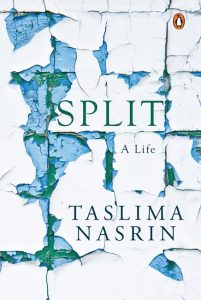Akash Kapur is the author of two books and has written for various publications. His first book, India Becoming: A Portrait of Life in Modern India, was published in 2012 by Penguin USA and India. A French edition came out in 2014 from Albin Michel. Auroville: Dream & Reality, his recent book, is an anthology of writings by residents and visitors of Auroville, the cosmopolitan and spiritual community near Pondicherry.
Here are ten facts you should know about the author:











Tag: Penguin India
5 Vignettes that will make you Reminiscent of your Teen Years
Swati Kaushal is the bestselling author of five highly acclaimed novels, including Piece of Cake, Drop Dead, Lethal Spice, and her most recent work, A Few Good Friends. An alumna of Lady Shri Ram College, New Delhi, and an MBA from IIM Calcutta, Swati has worked with Nestlé India and Nokia, India. Her book, A Girl Like Me, is the story of sixteen-year-old Anisha Rai, packed with the breathless exuberance of teenage life.
Let’s read through 5 poignant instances from the book that will immediately strike a chord!
————-





—–

Catalyst by Chandramouli Venkatesan – An Excerpt
Chandramouli Venkatesan is a corporate veteran with over twenty-six years of experience in the industry. He has worked with Asian Paints, Cadbury/Mondelez, Mirc Electronics/Onida and Pidilite. He has served in various senior capacities, including as CEO and managing director. He has conducted numerous speaking sessions, which have benefited over 1000 people, and mentored and guided many others to be successful in their careers. His book, Catalyst, will arm you with the right tools to succeed at your workplace and get the most out of every moment, every day.
Let’s read an excerpt from this life-transforming book.
————
In all my experiences and travels across the world, the one thing that stands out is the hunger for success that most people have and, in particular, Indians have. Often that hunger for success can be simplified by most people as success and growth in careers. That success in life is equal to success in careers is often the operating assumption of most people. In the latter portion of the book I do try to give a more holistic dimension to success in life to include values, character and other related aspects. However, in the first half of the book I focus primarily on giving what people want—the keys to success in careers.
I have a simple equation for career growth
Career growth = Real Individual growth +_ Environmental aspects
What this equation tries to say is that career growth is driven by two factors—real individual growth and environmental aspects. Real Individual growth is the growth we experience in the duration of our careers; how much each one of us grow our knowledge, our skills, our judgement, our influence, our communication etc. The second factor is Environmental aspects, which covers things like buoyancy of the job market, industry related factors, relative availability of talent in your skill areas etc.
Let me first cover the impact of environmental aspects on career growth. Our careers are typically 40 years long, we start in our 20s and wind up in our 60s. During these 40 years we will have both environmental tailwinds and headwinds to our careers. An example of a tailwind would be the times in your careers where the job market is hyper hot for the skills you have, there is a shortage of the skills you bring and people tend to get jobs and salaries bigger than what they deserve, sometimes going all the way to bubbles. Another example of a tailwind is when your boss quits the company, you are not yet fully ready to take that role, but the company decides it would rather go with an insider and hence gives the job to you even when you are not yet fully ready. Such tailwinds are bound to support most of us at times in our careers.
Similarly, we have all experienced headwinds in our careers. There are times when the economy is dragging, the job market is weak and there are very few opportunities for people to grow. Another example of a headwind is when you have been steadily getting ready for a big job, equipping yourself with the right experiences, apprenticing under the right leaders and preparing yourself for the opportunity and when the opportunity comes the company in its wisdom decides it wants to drive change, wants new thinking and a change in strategy and hence prefers to hire an outsider into the role as opposed to promoting an insider. Nothing you did wrong, but the dice did not roll your way.
My experience is that in a 40-year career, the headwinds and the tailwinds balance each other out. You will have some headwinds in your career as well as some tailwinds. You have to be a very lucky person for the tailwinds over 40 years to be greater than the headwinds and similarly you have to be very unlucky for the headwinds over 40 years to be greater than the tailwinds. For most people the two does balance out. Hence going back to our career growth equation, it means that the environmental aspects will not be deciding factor in driving career growth.
The catalyst of career growth tends to be real Individual growth. Simply said, in your career you will experience as much career growth as you are able to grow yourself as an individual and as a professional, what I call real individual growth. If you manage to grow your skills, your knowledge, your decision making, your judgement, your influence on others, your communication etc. then you will experience career growth. Career growth is directly proportional to and is a function of the real individual growth. You experience career growth if you manage to grow yourself during your career, if you stop pushing yourself at any stage the career growth also comes to a screeching halt.
Hence the equation of career growth can be simplified to
Career growth = Real Individual growth
One way I like to state this is the expression, “you get what you deserve”. Far too often in our careers we focus on the getting part of it, we focus on getting the promotion, getting the new job and getting career growth. We do not focus on deserving more, increasing our capabilities, our skills etc. In a career, you get what you deserve. It is useful to remember what is in our hands—focusing on deserving more and driving our real individual growth.

7 Things that make Alex Cross the most badass detective in the Patterson Universe
James Patterson is one of the best-known and biggest-selling writers of all time. His books have sold in excess of 365 million copies worldwide. In one of his most famous detective series (Alex Cross), we have the dark, brooding and handsome Alex Cross as the chief protagonist.
Let’s have a look at what makes Alex Cross such an expert sleuth.
1. A Troubled Past
2. Not the run-of-the-mill hero

3. Know the Enemy’s Mind

4. FBI’s favourite

5. Love=Loss

6. A Man of Sparse Taste

7. Keep your Friends close, Enemies closer

A born hawkshaw with the sharpest grey cells, Alex Cross can and will solve the murkiest crimes!
5 reasons why Undercover Princess by Connie Glynn should be the next read for you.
Connie Glynn has always loved writing and her new book, Undercover Princes (The first in The Rosewood Chronicles) is about two fourteen-year-olds, one who never wanted to be a princess in the first place and the other who is obsessed with them.
Here are 5 reasons why Undercover Princess should be the next read for you.
————
A Mélange of Colorful Stories and Book Jackets through five Penguin Titles
This Holi we bring to you a list of 5 highly recommended books. With covers as colorful as their stories, the following books will only add to joy of the festivities.
So what are we waiting for? Let’s get started!
1. Waves by Sundara Ramasamy
 One of the most versatile and innovative among contemporary Tamil writers, Sundara Ramaswamy’s early stories, written between 1951 and 1966, focus on ordinary people leading ordinary lives and are full of gems by way of characterization. In Waves, the plot turns darker and more complex. Surprising us with their twists and turns, raising uncomfortable questions and yet touched by a fine sense of humour and humanity, the stories in this collection belong with the best in the genre.
One of the most versatile and innovative among contemporary Tamil writers, Sundara Ramaswamy’s early stories, written between 1951 and 1966, focus on ordinary people leading ordinary lives and are full of gems by way of characterization. In Waves, the plot turns darker and more complex. Surprising us with their twists and turns, raising uncomfortable questions and yet touched by a fine sense of humour and humanity, the stories in this collection belong with the best in the genre.
2. Someone Like You by Durjoy Datta and Nikita Singh

A contemporary novel that revolves around the lives of five people who are looking for the right path in their lives, the book begins with the story of a girl named Niharika Singh. Thanks to the makeover by her sister’s friends, the nerdy Niharika entered college more confident, more attractive. She meets the sweet, shy Tanmay, and the spoilt but lovely Pia and they become best friends. And when Akshat and she began dating, life finally seemed to be falling in place. Except that it wasn’t… Someone Like You is a powerful and touching story of friendship, love and betrayal.
3. A Life of Adventure and Delight by Akhil Sharma

Elegantly written and emotionally immediate, the stories in A Life of Adventure and Delight provide an intimate, honest assessment of human relationships between mothers and sons, sons and lovers and husband and wives from a dazzlingly original, critically acclaimed writer.
4. Eleven Ways to Love: Essays

Pieced together with a dash of poetry and a whole lot of love, featuring a multiplicity of voices and a cast of unlikely heroes and heroines, Eleven Ways to Love is a book of essays that show us, with empathy, humour and wisdom, that there is no such thing as the love that dare not speak its name.
5. After All This Time by Nikita Singh

Lavanya, the lead character of After All this Time gets the shock of her life when she discovers that she’s HIV positive. The revelation shakes her out of the monotony that her life has become. It’s time for a change. She resigns from her job, dumps her boyfriend and goes home. At home she finds a bucket list and she knows it’s a sign of what she needs to do. With her is an old neighbour and a friend who’s just broken off with his girlfriend. Sparks begin to fly! However, what she learns is that you need to really live before you begin to love!
————-

‘Taslima and Bhimsen steal the show’: Scenes from an award night
Taslima Nasrin is an eminent writer and secular humanist who has been subjected to forced banishment and multiple fatwas. She has been living in exile since 1994. For her powerful writing on women’s rights and uncompromising criticism of religious fundamentalism, the Bengali original of this book, Split: A Life, was banned by the Left Front in West Bengal as well as the Government of Bangladesh. Bold and evocative, Split: A Life opens a window to the experiences and works of one of the bravest writers of our times.
Here’s an excerpt from this powerful book.
————

I asked for forgiveness because I had dared to accept such an exalted award despite being such an insignificant entity, for having shown the audacity even though I was utterly undeserving. Who knew if anyone forgave me in the end! After the event many writers and artists came up to congratulate me and I spoke to people I had never imagined I would have the opportunity to speak to. The day after, the news of the award ceremony was published on the front page of Anandabazar Patrika along with the headline ‘Taslima and Bhimsen steal the show’. Celebrations were being held all around me. Soumitra Mitra was very happy with how things had turned out and he was taking me to various places to meet various people. He surprised me with a visit to Rabindrasangeet exponent Kanika Bandyopadhyay. I was an ardent admirer of Kanika and standing in front of her was like a wave of euphoria had swept over my entire world. Ashesh and Mona, my companions during the Basanta Utsab trip, came to see me and took a bunch of photographs. I was suddenly an important person who no longer had to walk hunched along the corridors of Anandabazar and everyone knew who I was. Sagarmoy Ghosh offered me a chance to write a serialized novel for Desh. Floored by the offer I confessed I did not know how to write a novel. He smiled but did not rescind his offer. Nikhil Sarkar invited me to his Salt Lake residence and gave me a bunch of letters with which to go and meet a number of well-known people. Dutifully, the small writer with the big award took the letters with her and hesitantly went to pay a visit to the big guns. Mahasweta Devi, Meera Mukhopadhyay and many others—stars one was meant to show respect to when reaching for the sky. Whether I was even near the sky or I was where I had always been, I could scarcely tell for sure; I stood in front of the celebrities with all my insecurities and remonstrations intact. There was a trend in Calcutta to touch the feet of senior writers and artists to pay them one’s respects. Unused to the custom, I could not help but stand stiffly in front of most people I met. I had never managed to grasp the Bengali Muslim version of the same ritual either, the kadambushi. Though my heart was full of respect, I refrained from touching people’s feet and this must have irked many a senior, made them think of me as an upstart. But there was hardly anything I could do about it. If I was suddenly asked to till the field was I not supposed to stand there dumbstruck? It was impossible for me to abruptly start doing something I had never done before.
Despite not being one for formalities, I loved giving the small gifts I had brought from Bangladesh to my friends and well-wishers in Calcutta. Aveek Sarkar had handed the Ananda Puraskar to me and it was only right that I gift him a small token in return. So I took the multi-coloured jamdani sari I had worn for the award function, got its ornate border cut and had it framed in the best golden frame from a renowned framing shop on Park Street. When I reached the Anandabazar offices with my gift, Nikhil Sarkar was astounded by my daring. What I had failed to grasp was that for an art connoisseur and a man of such refined tastes as Aveek Sarkar, the limits of what he preferred among Indian art objects was probably defined by the Maqbool Fida Husain I saw adorning the walls. Otherwise, everything else was surely works by famous Western artists and painters. A jamdani sari border, no matter how beautiful, was not something that could possibly hope to be displayed in his room. I could not help but think to myself that the women behind such exquisite work were no less great artists, but the tasteful and the rich hardly considered them worthy of their attention. It was fortuitous that I had not turned up at Aveek Sarkar’s office directly with the framed piece of jamdani. Nikhil Sarkar advised that if I was bent on giving the gift to someone I should give it to Aveek Sarkar’s wife. Swallowing my discomfiture I did exactly that and managed to save Sarkar, the giant of Anandabazar, from any further embarrassment. A leading bureaucrat of the Bangladeshi consulate invited me and some authors to his place, primarily in my honour. As soon as I arrived the poets and writers of Calcutta surrounded me and inundated me with questions. So many questions of so many kinds— renaissance, revolution, feminism, backlash, modernism, postmodernism, my literary ideology, political beliefs, class struggle and so on. They waited for me to reply with startling answers while all I could do was stare at them in wide-eyed wonder. The questions appeared incomprehensible to me and seeing my bafflement they too began glancing at each other in surprise. Embarrassed, I wanted to curl up like a snail and disappear from the star-studded gathering, simply vanish without a trace. I did not want to answer any questions because I had no answers to give.
5 Mantras To Keep Ideas Relevant
Gopalakrishnan has been a professional manager for forty-two years. He serves as an executive director of Tata Sons Ltd and as a director on the board of Tata Power, Tata Technologies, AkzoNobel India, Castrol India and ABP Pvt. Ltd. In this book, A Biography of Innovations: From Birth to Maturity, he explores how concepts turn into ideas, which then become prototypes, models and products.
Let’s look at 5 ways in which one can keep their ideas relevant.
———————-




 ——–
——–

Coffee Can Investing The Low Risk Road to Stupendous Wealth – An Excerpt
Most people invest in the usual assets: real estate, gold, mutual funds, fixed deposits and stock markets. It’s always the same four or five instruments. All they end up making is a measly 8 to 12 per cent per annum. What if there was another way? In Coffee Can Investing, Saurabh will show you how to go about low-risk investments that generate great returns.
Here’s an excerpt from this book.
———–
“The ancient Romans were used to being defeated. Like the rulers of history’s great empires, they could lose battle after battle but still win the war. An empire that cannot sustain a blow and remain standing is not really an empire.” – Yuval Noah Harari, Sapiens: A Brief History of Humankind 18 (2011)
Many historians take the view that the “greatness” of a kingdom or an empire should be measured by its longevity. How long did the empire sustain? How durable was the empire? By this measure the first great empire was arguably the Persian Empire. Founded around 550 BC, it lasted for around 200 years until Alexander the Great brought it to an end in 330 BC by defeating King Darius III. However, if longevity is the measure of a great empire, then the Roman Empire is by some distance the greatest empire that the world has ever seen. Whilst the first Roman republic, headquartered in Rome, lasted from 100 BC to 400 AD, the imperial successor to the Republic lasted for a staggering 1400 years before falling to the Ottoman Turks in 1453. So ubiquitous is the influence of this empire, the language in which we are writing this book, the legal system which underpins the contract between the publisher and the authors of this book, the mathematical concept of compounding which underpins much of this book, all of them come more or less directly from the Roman Empire!
When it comes to investing in stock markets, greatness is defined as ‘the ability of a company to grow whilst sustaining its moats over long periods of time’. This then enables such great companies to sustain superior financial performance over several decades. The Coffee Can philosophy of investing is built using the twin filters to identify great companies that have the DNA to sustain their competitive advantages over 10-20 years (or longer). This is because ‘greatness’, which the coffee can portfolio seeks, is not temporary and it is surely not a short-term phenomenon. Greatness does not change from one quarterly result to another. In fact, great companies can endure difficult economic conditions.
Their growth is not beholden to domestic or global growth – they thrive in economic down cycles as well. Great companies do not get disrupted by evolution in their customers’ preferences or competitors or operational aspects of their business. Their management teams have strategies that deliver results better than their competition can. These great companies effectively separate themselves from competition using these strategies. Over time, they learn from their mistakes and increase the distance between themselves and their competition. Often, such companies appear conservative. However, they do not confuse conservatism with complacency – these companies simply bide their time for making the right moves. These traits are common among great companies and rarely found outside great companies.
——————-

How to Plot a Psychological Thriller; Juggi Bhasin spills the beans
Before one plots a novel, a story or in a macabre sense even a heist or a murder, one must think of the idea leading to the plot. The plot in a sense is the body but the idea is the life breath, the very soul of the thriller.
In a psychological thriller, the psychology or the innermost workings of the mind creates the idea and the ecosystem of the novel. The idea in a psychological novel is in that sense very different from horror, action or the romantic genre where a certain degree of physicality of action is required to flesh out the story.
I would even go to the extent and say that the psychological thriller is a kind of elite art form because the challenge here is to hold the reader’s attention by action that to a large extent takes place in the mind rather than the physical world. This is no easy task because we live in a day and age where there are hundreds of short and crisp distractions offered by television, cinema, the net and various other channels of entertainment and information.
The psychological thriller can only compete with these art forms if the writer is both a skilled practitioner of plot as well an astute observer of human behaviour. A psychological thriller in the hands of a skilled writer is like mining a vein full of inexhaustible precious material. The same novel in the hands of a writer who pretends to understand human behaviour is like jumping in the sea with lead weights.
So, the idea of the novel and a sharp analysis of human behaviour are good enough to get one started with the psychological thriller. The next step is to create a narrative that is sure but unusual, simple but impregnated with complex ideas and the love for thrill, probably at the end or the beginning of each chapter.
The trick in the narrative is to constantly intrigue the reader and force him to guess or speculate what will happen next.
This method is relatively simple in an action or adventure novel. But we are dealing with mind games in the psychological thriller and an abundance of action or violence or blood and gore takes the impact out of the psychological genre.
So then how to meet this challenge? There are three ways we can rise to the challenge.
We deploy in a chapter the right mix of conversation, description and imagery to build an atmosphere of intrigue, uncertainty and dread. We polish our craft to such a degree that we hold back more than what we reveal. This is the key to a great psychological thriller. We must resist excess. We have to be frugal with our analysis and hold back unnecessary display of emotion. We need to leave the reader asking for more after each chapter.
One way we achieve all this is by the usage of economy of words. Sometimes to depict complex emotion and thought processes of the mind we need not give lengthy explanations. We can simply describe mundane action. The trick is that this mundane action should be written in a way that it sets the reader on an edge.
To give an example a woman highly stressed by her husband’s behaviour goes to the kitchen and sets the kettle to boil to make some tea for herself. To convey her state of mind I would write about how she selects the tea leaves and immerses them in the boiling water. I would show a single lock of her hair carelessly clouding her face. I would depict her pinched and determined face as she moves in the kitchen soundlessly making the tea. And finally, I would show her fill a cup with tea, stir it a bit longer than necessary and then with great deliberation throw the tea in the sink and quietly walk out of the kitchen. I would not comment on the situation or speak of her state of mind. Her mundane actions in the kitchen would do the talking for me. They would convey her state of mind.
The craft of writing a psychological thriller in a sense mirrors many aspects of fine cinema. The chapter should be broken down into many scenes. Each scene should make the reader walk a tightrope. This can be achieved when the scene is shot with tension, mundane but sharp description and cutting-edge, crisp, short and pithy dialogues relevant to the scene.
Many people erroneously believe that psychological thriller writing should be in a sense arid, lifeless to convey the workings of the human mind. I disagree. I am a great believer in using imagery in narrative. Use of imagery need not be florid or over the top. It needs evoke a multiplicity of emotions. Again, to give an example we can show in a conventional image a dead body floating in the water which evokes a feeling of sadness or revulsion. But the better way would be to show a tattered shirt or a saree minus the body, floating across the water. Such an image creates doubt, horror, fear and so many different emotions.
The plotting of the psychological novel therefore incorporates myriad elements of dialogue, description and imagery but constantly our endeavour must be to hold back and keep the reader guessing.
A reviewer for my new book, Fear is the Key, commented (views available on Amazon) that long after she had read my book she kept thinking of various ‘scenes’ from the book which were almost like troubling images that refused to go away.
Without sounding immodest, I think that should be the endgame and end goal of the writer who attempts a psychological thriller. In a single word if we can get the reader somewhat disturbed and contemplative after reading the book then in a certain psychological sense we have touched some deep chords in the reader and we might have just succeeded in our endeavour of writing a book of the mind.
——————-
Juggi Bhasin was one of the first television journalists in India. He has worked with Doordarshan News and Lok Sabha Television as a reporter and anchor. Bhasin is the creator of the popular graphic novel Agent Rana, which appears in a major national daily.
His new book, Fear is the Key will continue to give you chills long after you have read it.
























